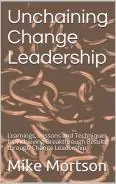
Ratelinx interviews article with Mike Mortson originally appeared on ratelinx.com. If 2020 taught us anything, it’s that the importance of supply chain management cannot be understated. After watching customers scramble to source household toiletries and life-saving PPE, supply chains are left wondering, “What comes next?”
As we prepare for whatever comes next, it’s clear we need leaders ready and able to reinvent the supply chain.
“I founded a website, supplychaingamechanger.com, with the sole mission of sharing experiences and expertise for the benefit of others,” he says. “There are so many people, myself included, who have had great careers and had wonderful opportunities. I believe that it is incumbent on all of us to share those experiences to help others along their career paths.”
Here’s what Mike had to say about the present and future of supply chain in a recent interview.
“The impact of supply chain is so broad and far-reaching that any professional in the field has the opportunity to impact virtually any aspect of a company’s, or even an industry’s, performance.”
Supply Chain Is Essential for Business Success
For the modern company, supply chain management is no longer a singular, separate operation like other business functions. Instead, it’s deeply ingrained, and tied to, a company’s success. So much so that supply chain managers have a unique opportunity to greatly impact the company with their role.
It is this opportunity, Mike says, that makes supply chain leaders “game changers” for their companies.
“In many respects, just being a part of the supply chain makes anyone a game changer. The impact of supply chain is so broad and far-reaching that any professional in the field has the opportunity to impact virtually any aspect of a company’s, or even an industry’s, performance,” Mike says. “Supply chain reaches into planning, operations, finance, asset management, procurement, logistics, distribution, sales, marketing, I/T, executive management, third-party partnerships, and leadership of all the above. That means a supply chain professional can shape and impact the tactical and strategic direction, growth, and success of any and all aspects of a company.”
Skills that Turn Leaders into Game Changers
According to Mike, what sets true supply chain game changers apart is skills and leadership qualities that enable them to put their power to its best use.
“The skills supply chain professionals must develop and deploy in the future go far beyond just understanding the transactional mechanics of their functional operations,” Mike says.
“It is incumbent on all of us to create even more robust supply chains in the future. If we don’t learn lessons from the pandemic, we are bound to repeat the problems we have experienced, as disasters of some kind are always on the horizon.”
These skills span the gamut of operational executive requirements. Supply chain game changers must not only understand processes and think bigger when it comes to supply chain management. They must also know how to lead on a much larger, global scale. Mike says the following skills are must-haves for future supply chain leaders:
- Applied, real-time end-to-end supply chain management expertise
- Strategic planning and big thinking
- Technological expertise
- A data analytics mentality
- Risk management expertise
- Change leadership
- Control tower leadership
- Holistic, global leadership
- Business process transformation capability
- Best practices knowledge
Having worked with professionals from dozens of countries in many industries, Mike says these skills are global and universal. “You are either a good, or great, leader or you are not. It doesn’t matter what country you come from,” Mike says. “Your personal expertise, skill, and leadership skill shine through, no matter where you were born or live.”
COVID-19 Illustrated Supply Chain Failures
With professionals in position to impact their company’s future, we need to learn from the past to reshape the future. The COVID-19 pandemic, in particular, has certainly impacted our personal and professional lives and taught us important lessons.
One way it has done this is by exposing the fragility of the supply chain as it currently exists (causing, for example, difficulty in purchasing, fulfilling, and delivering toilet paper and face masks). But, as much as it has illustrated failings in supply chain management, Mike believes COVID-19 has also provided an opportunity to learn and build a more robust supply chain moving forward.
“It is incumbent on all of us to create even more robust supply chains in the future,” he says. “If we don’t learn lessons from the pandemic, we are bound to repeat the problems we have experienced. Disasters of some kind are always on the horizon.”
Supply Chain Leaders Must Embrace a New Normal
Mike says one lesson from the pandemic is the importance of supply chain talent—the game changers that keep things moving. In addition, we’ve learned the need to design supply chain flexibility and speed of response. There is an even more important capability that professionals must develop: the flexibility and resiliency to take changes in stride.
To build a more resilient supply chain for the post-pandemic landscape, we must accept there is no turning back. The “New Normal” is here, and the industry must not give in to pressures to return to the way things used to be.
New Sourcing and Planning Strategies are Key
One critical part of developing resiliency is diversified sourcing. Mike says, “Companies must look beyond any single sourcing or sole sourcing strategies. By definition, they create single points of failure, which can bring down any supply chain.”
This strategy plays into a larger lesson regarding disaster planning and risk management. Rather than dust off risk management documents once a year, then file them back in a drawer, Mike says supply chain professionals must take these preparations seriously and include them in ongoing strategy.
Additionally, more attention must be paid to strategic inventory planning. Particularly as more companies adopt e-commerce channels, this is a way to remain connected to customers and keep sales alive.
Mike also expects larger supply chain overhauls as companies search for more efficient and safer means of fulfillment. For instance, he mentions “don’t touch” supply chain strategies like dropshipping, which are essential to minimizing the number of points where goods are handled and stored. More advanced outsourcing strategies might also be necessary for companies to streamline their supply chains.
“Companies must consider a more extensive outsourcing strategy,” Mike says. “For instance, I believe that engaging external service organizations providing Supply Chain as a Service (SCaaS) may be a more strategic way to get access to best-in-class expertise, processes, and techniques.”
The Future of Supply Chain Evolution is Digital
The transformation to a digital supply chain is crucial for success in the near future. Big data and technological advancements have already disrupted the industry on multiple fronts. But greater adoption is necessary to fully build out a digital supply chain.
“There are so many new and exciting technologies that will shape the future, and they all fall under the umbrella of the digital supply chain,” Mike says. “Blockchain, autonomous vehicles, artificial intelligence, the Internet of Things, virtual reality, augmented reality, end-to-end digital connectivity, big data, cloud computing, machine learning, 3D printing, control towers, cybersecurity, and more.”
Automation is a key piece of the digital supply chain as well. Not just automation on the manufacturing floor, either—advanced analytics and artificial intelligence can assist businesses in automating their processes, too.
The Time is Now to Invest in Supply Chain Technology
Mike believes control towers will also be crucial in incorporating and streamlining digital supply chain management. “Control tower proliferation should be the new normal. Control towers allow for centralized command and control, in real-time, of the entire end-to-end supply chain,” Mike says. “This is a part of the overall digital supply chain that should be a part of every company’s investment strategy.”
According to Mike, each of these separate technologies are the building blocks of the digital supply chain. And while the implementation of these investments might not be perfected for a few years, supply chain game changers will lead the charge.
“I believe this is the most exciting time to be in the supply chain. It will take decades, likely—far beyond the next five years for sure—as companies and industries figure out how to implement digital supply chain strategies. But who will be at the center of all of this, leading and architecting the future? The supply chain leader,” Mike says. “While I/T experts will develop the technologies, it is the supply chain leader who will create the big-picture vision of what the future will be and shape what is needed to be done to make that future a reality.”
Accepting Change is the Key to Future Supply Chain Success
Although the pandemic continues to create challenges, there is now enough data to examine strategies and find better solutions. With supply chain game changers ready to step up to the leadership plate and think bigger, Mike believes a brighter supply chain future is just in reach.
What’s important in the coming months and years is the ability to turn away from past strategies and accept strategic changes. These might include extensive outsourcing, inventory planning, and heightened disaster preparedness. But most of all, supply chain leaders must be prepared to invest in the capabilities and technologies required to steer supply chain management into the digital future.

